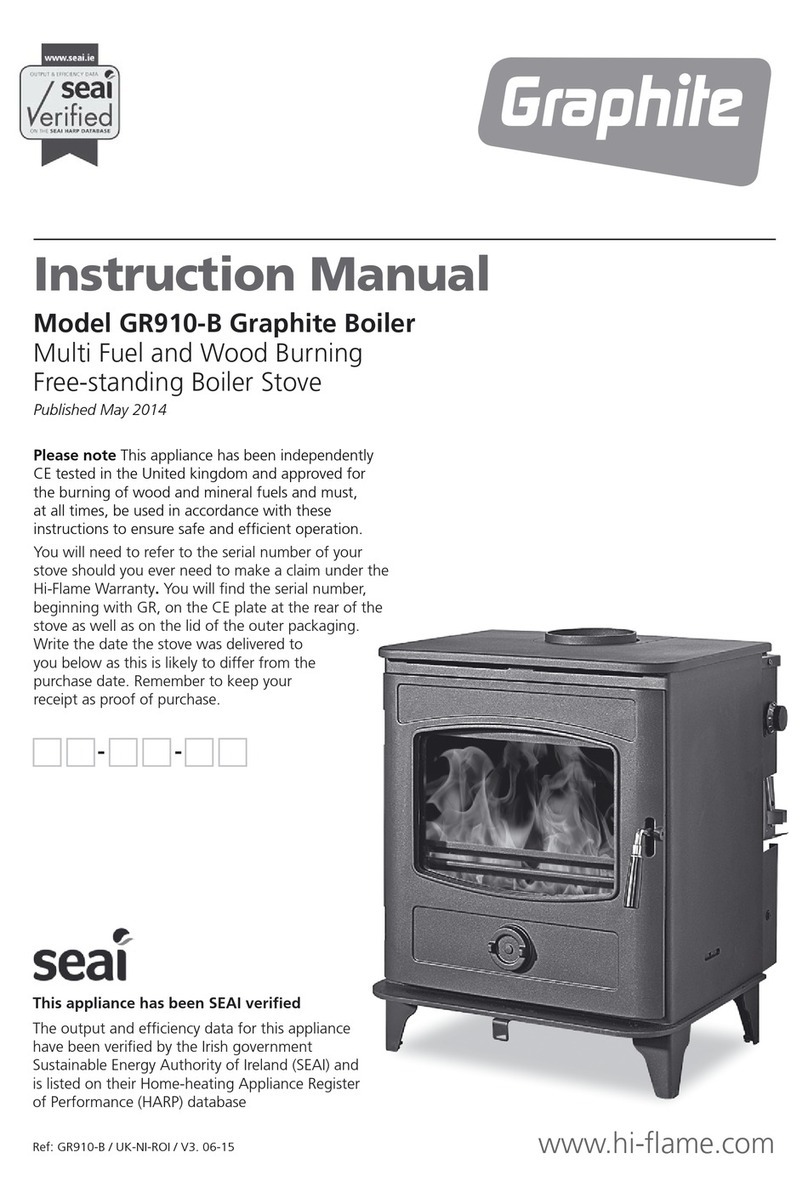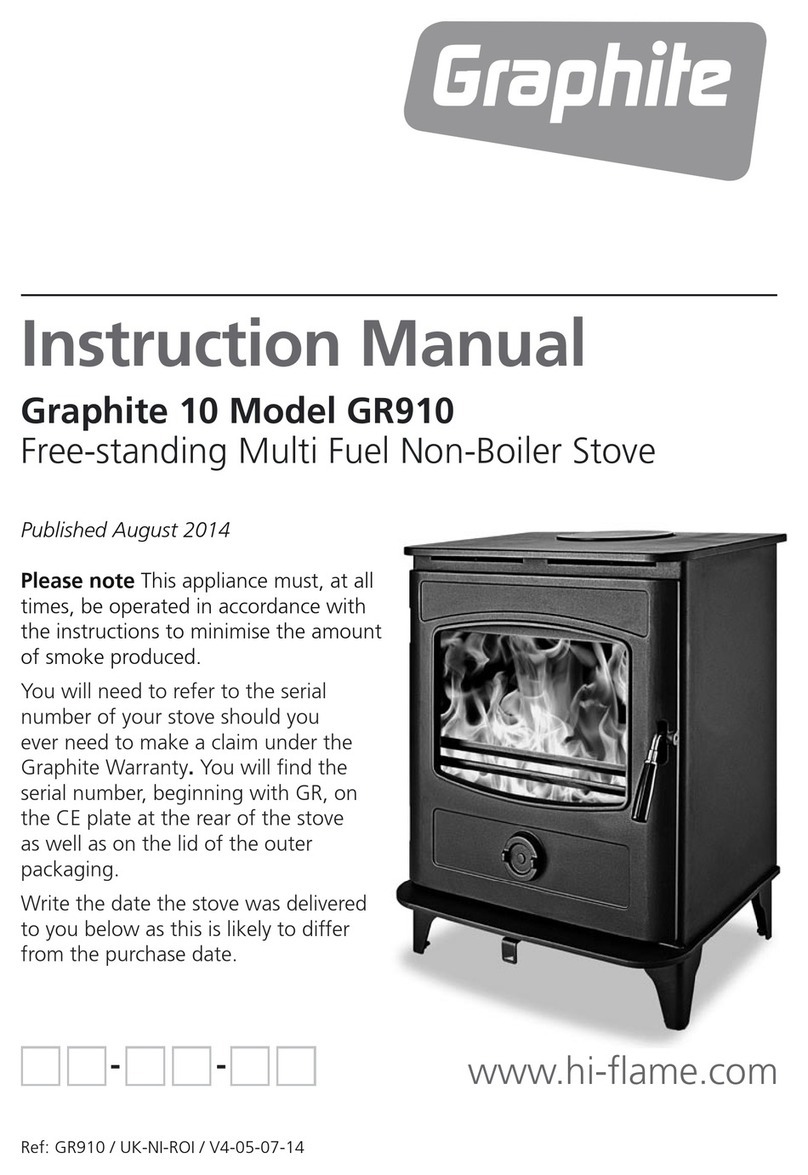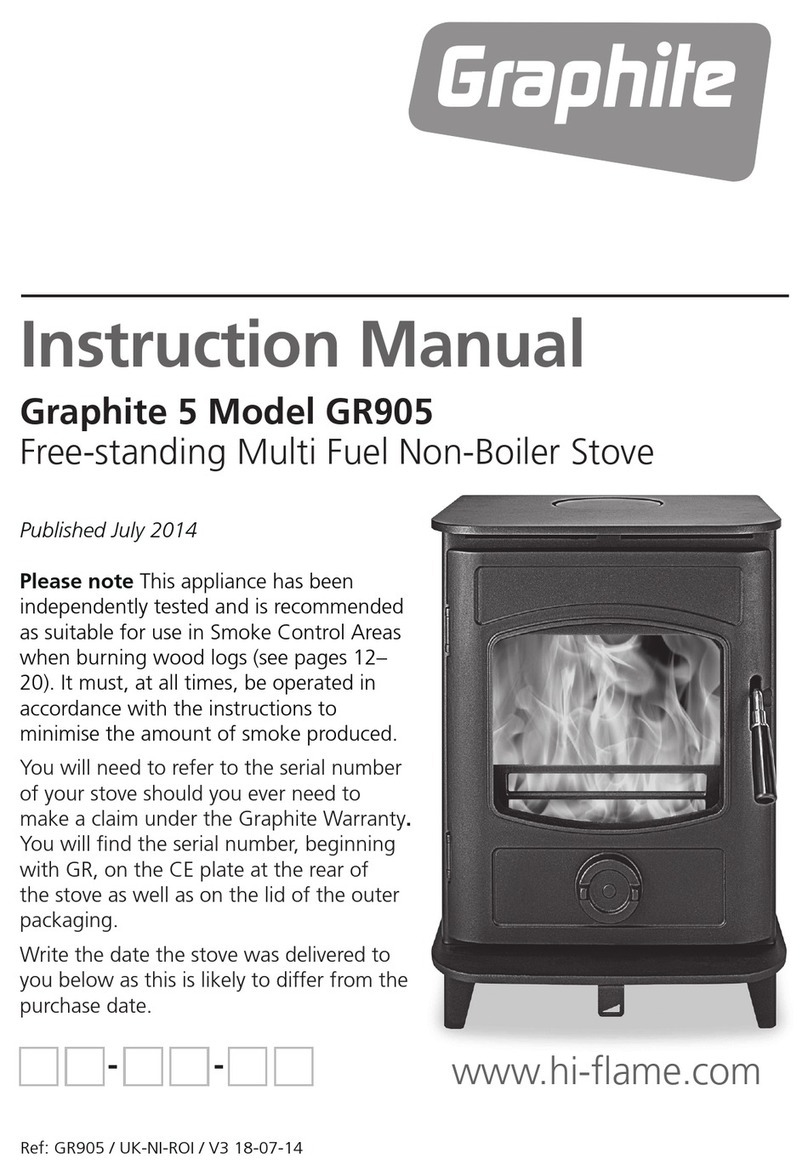
ASSEMBLING THE STOVE
Your new Graphite stove is extremely
heavy. Always handle with care and
make sure that you have additional
strong help when you move it.
The ash lip on the Graphite 5 is factory
fitted and, along with the door and
door handle, should not be used to grip
the stove as they could be damaged
from supporting the stove’s weight.
Items, such as the lid and fuel retaining
bar, can be removed to help reduce the
weight. Under no circumstances should
the door be removed as this will
invalidate your Hi-Flame Warranty.
• Unpack Remove your new stove from
its recyclable packaging. Retain this
until the stove is installed and is fully
operational. Unfasten retaining wires
and remove any components, including
those inside the ash pan, from inside
the stove
• Inspect Please inspect the stove to
check that it has not been damaged in
transit – never attempt to install a stove
which has been damaged. If damage is
suspected then report this immediately
to your stove dealer
• Check List Study the component
packing list on page 4 and make sure
that you have all of the components
listed before proceeding. Some compo-
nents are contained within the ash pan
• Baffle Plate Check the position of
the baffle plate (sometimes known as
the throat plate) inside the ‘roof’ of the
stove to ensure that it has not moved
during transit. This is a heavy metal
plate which directs flames and helps
10
retain heat inside the stove. The base of
this plate should sit securely on a small
ledge at the back of the firechamber,
towards the top. The rest of the plate
is sits on top of the side firebricks to
maintain it at the correct angle and in
line with the top of these side firebricks.
It is best to fully familiarise yourself
with the baffle plate’s correct location
by practising removing it and re-fitting
it prior to the stove’s installation as you
will need to regularly check the top of
this plate and the access to the flue way
to avoid potential soot build up and
blockages. Once you know how to do
this it is a very easy operation.
See page 36
• Handle Assembly Thread the split
washer along the handle bolt. Feed the
bolt and washer through the handle
grip. Use a Phillips crosshead
screwdriver to attach the assembled
grip to the door handle clamp
mechanism on the door, being careful
not to over-tighten.
Your stove is now ready for installation.
• Moving Do not drag the stove.
Always lift the stove to finally position
it. Alternatively it may be possible to
place the stove on heavy duty plastic
sheeting or thick floor covering to slide
the stove into position, being careful
not to damage any finished floor
surfaces with trapped grit or building
debris.
• Flue Options The GR905 stove is
delivered already configured for a top
fitted 125mm (5”) flue pipe but can
easily be switched to the rear fitting flue
option. To do this see page 11.































